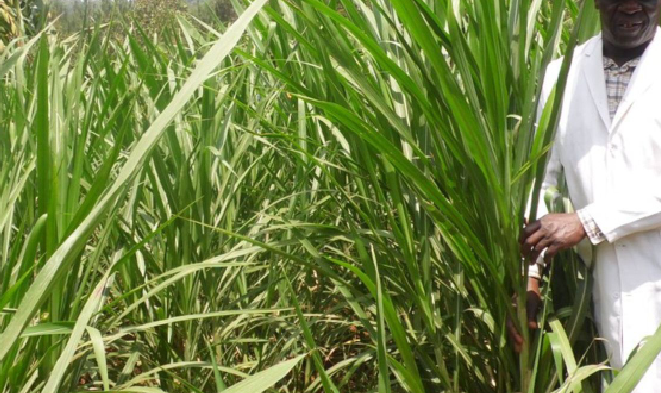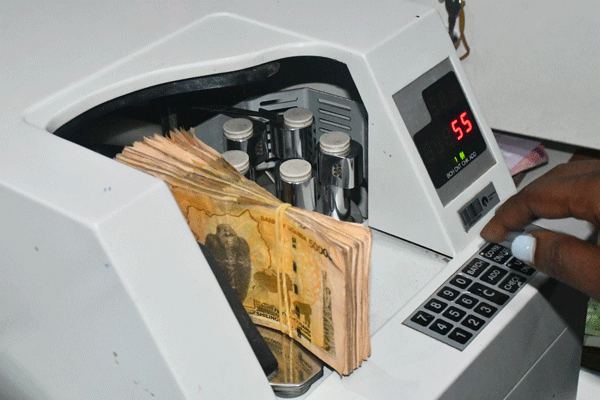Prime
Livestock feed: Tips for growing Super Napier

What you need to know:
- Grass matures in 75-90 days, with subsequent cuts harvested at 45-60 days for animal feeding.
- Harvesting can be manual or mechanized using sharp pangas or grass cutters.
- It can be fed raw to livestock or used for silage after wilting in the sun.
Livestock farming plays a vital role in Uganda’s economy, yet traditional feeds have failed to meet productivity challenges. Livestock farmers need alternative options to enhance animal health and productivity.
Ordinary Napier grass lacks sufficient protein and energy, resulting in reduced meat and milk production.
According to Alex Wanjala, an agriculture expert, Napier grass contains only five to eight percent protein, far below the required 14-22 percent for livestock at different stages. Additionally, its low dry matter content of 22 percent leads to poor body condition and reproduction.
Introducing Super Napier grass (Pakchong 1)
Super Napier (Pakchong 1), a hybrid of elephant grass and pearl millet developed by Dr Krailas Kiyothong in Thailand, offers a promising solution to improve livestock feeding and production.
Simon Thuo and Francis Kangethe, promoters and distributors of Super Napier, have conducted extensive tests in local laboratories. Results indicate a protein content of 16-18 percent, suitable for various livestock.
Importing the grass from Thailand in 2018, the duo witnessed remarkable growth and improved milk and body weight in their dairy goats and Dorper sheep.
Multiplying Super Napier grass
Thuo and Kangethe have transformed their six-acre piece of land into a lush field of over 10 fodder crop varieties.
Using the Tumbukiza method, a recommended technique for grass multiplication, they have achieved vigorous growth and cluster multiplication.
According to Philip Pyeko a livestock expert, Super Napier grass has already shown promising results. Farmers who planted the grass last year have recorded a significant increase of 7-12 liters of milk.
Benefits of Super Napier grass
High biomass production of up to 200 tonnes per acre annually, sufficient to feed 15 dairy cows for a year.
Suitable for silage without additives due to its high water-soluble carbohydrate (WSC) content.
Smooth and hairless leaves, eliminating irritation and allergic reactions. Requires harvesting every 7-8 years with good management and nitrogen-rich soil. First harvest within 75-90 days and subsequent cuts every 30-45 days.
Planting and soil requirements
Super Napier grass is propagated through cuttings using the TM technique for faster establishment. Digging 2ft deep holes and mixing decomposed manure and soil in each hole aids growth. Suitable for all soil types and altitudes up to 2100m above sea level.
Weeding and Irrigation
Minimal weeding is required, as the grass suppresses weeds with its dense foliage.
Drip irrigation is recommended, but overhead irrigation can be used in cooler areas with controlled wind speed.
Harvesting and utilisation
Grass matures in 75-90 days, with subsequent cuts harvested at 45-60 days for animal feeding.
Harvesting can be manual or mechanised using sharp pangas or grass cutters. It can be fed raw to livestock or used for silage after wilting in the sun.
Super Napier Grass vs. Brachiaria Grass
Super Napier grass contains 16-18 per cent crude protein, outperforming Brachiaria grass with 13.5 per cent protein content.
Incorporating Super Napier grass into livestock farming practices can significantly improve productivity and contribute to Uganda’s dairy sector.
With its exceptional qualities and proven results, Super Napier grass is a game changer for livestock farmers in the country.
Weeding
Minimal weeding is required, as the grass suppresses weeds with its dense foliage. Drip irrigation is recommended, but overhead irrigation can be used in cooler areas with controlled wind speed.





